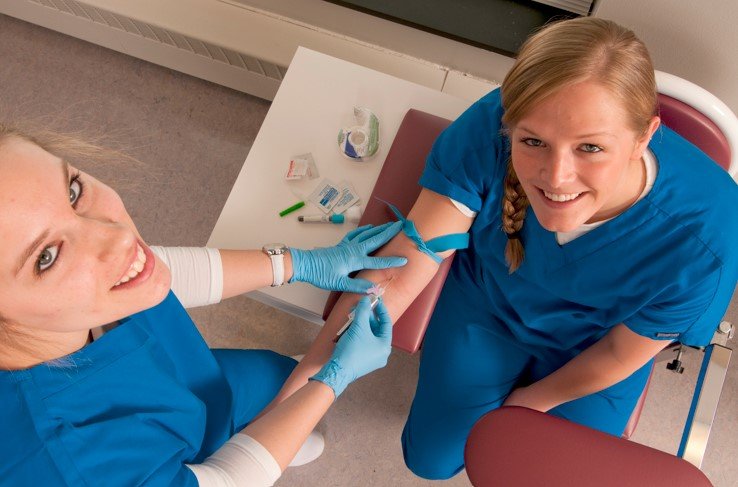Impact of Nutrition and Obesity Prevention Initiatives on Hospital Services
Summary
- Nutrition and obesity prevention initiatives impact hospital services by promoting healthier lifestyles and reducing the burden of chronic diseases.
- Hospitals play a vital role in supporting these initiatives through programs, services, and partnerships that prioritize nutrition education and obesity prevention.
- By addressing the root causes of obesity and poor nutrition, hospitals can improve patient outcomes, reduce Healthcare Costs, and contribute to overall community wellness.
Introduction
Nutrition and obesity prevention are critical public health issues in the United States, with significant implications for healthcare systems and providers. As the prevalence of obesity and related chronic diseases continues to rise, hospitals are increasingly recognizing the importance of promoting healthy eating habits and lifestyles to improve patient outcomes and overall community wellness. This blog post will explore how nutrition and obesity prevention initiatives impact hospital services and the strategies that hospitals can implement to support these initiatives effectively.
The Role of Hospitals in Promoting Nutrition and Obesity Prevention
Hospitals play a crucial role in promoting nutrition and obesity prevention initiatives by providing access to healthy foods, nutrition education, and support services for patients, staff, and the community. Some of the key strategies that hospitals can implement include:
1. Nutrition Education Programs
Many hospitals offer nutrition education programs for patients to help them make informed decisions about their dietary choices. These programs may include individual counseling, group classes, and cooking demonstrations to promote healthy eating habits and lifestyle changes.
2. Healthy Food Options
Hospitals can also support nutrition and obesity prevention initiatives by offering healthy food options in their cafeterias, vending machines, and patient menus. By prioritizing nutritious, wholesome foods, hospitals can model healthy eating behaviors and provide support for patients seeking to improve their dietary habits.
3. Community Partnerships
Collaborating with community organizations, schools, and local government agencies can help hospitals extend their reach and impact in promoting nutrition and obesity prevention. By working together, hospitals can develop comprehensive, coordinated strategies to address the root causes of obesity and poor nutrition in their communities.
Benefits of Nutrition and Obesity Prevention Initiatives for Hospitals
Implementing nutrition and obesity prevention initiatives can have numerous benefits for hospitals, including:
- Improved Patient Outcomes: By promoting healthy eating habits and lifestyles, hospitals can help patients better manage chronic conditions such as obesity, diabetes, and heart disease, leading to improved health outcomes and quality of life.
- Reduced Healthcare Costs: Preventing obesity and related chronic diseases can help reduce Healthcare Costs associated with treatment, hospitalizations, and long-term care for at-risk populations.
- Enhanced Community Wellness: By supporting nutrition and obesity prevention initiatives, hospitals can contribute to overall community wellness by promoting healthier behaviors and reducing the burden of preventable diseases.
Challenges and Considerations
While nutrition and obesity prevention initiatives offer numerous benefits for hospitals and healthcare systems, there are also challenges and considerations to be aware of, including:
1. Resource Allocation
Implementing and sustaining nutrition and obesity prevention programs can require additional resources, including funding, staff training, and infrastructure support. Hospitals must consider how to allocate resources effectively to maximize the impact of these initiatives.
2. Cultural Competency
Hospitals must also be mindful of cultural preferences, beliefs, and practices when developing nutrition and obesity prevention programs to ensure that the initiatives are relevant and accessible to diverse populations. Cultural competency training for staff can help promote sensitivity and understanding in delivering these services.
3. Policy and Advocacy
Hospitals can play a role in advocating for policy changes and systemic interventions that support nutrition and obesity prevention at the local, state, and national levels. By engaging in policy discussions and community advocacy efforts, hospitals can help create environments that promote healthy eating habits and lifestyles for all individuals.
Conclusion
In conclusion, nutrition and obesity prevention initiatives have a significant impact on hospital services by promoting healthier lifestyles, improving patient outcomes, and reducing Healthcare Costs. Hospitals play a vital role in supporting these initiatives through programs, services, and partnerships that prioritize nutrition education and obesity prevention. By addressing the root causes of obesity and poor nutrition, hospitals can contribute to overall community wellness and help build healthier, more resilient communities for the future.

Disclaimer: The content provided on this blog is for informational purposes only, reflecting the personal opinions and insights of the author(s) on the topics. The information provided should not be used for diagnosing or treating a health problem or disease, and those seeking personal medical advice should consult with a licensed physician. Always seek the advice of your doctor or other qualified health provider regarding a medical condition. Never disregard professional medical advice or delay in seeking it because of something you have read on this website. If you think you may have a medical emergency, call 911 or go to the nearest emergency room immediately. No physician-patient relationship is created by this web site or its use. No contributors to this web site make any representations, express or implied, with respect to the information provided herein or to its use. While we strive to share accurate and up-to-date information, we cannot guarantee the completeness, reliability, or accuracy of the content. The blog may also include links to external websites and resources for the convenience of our readers. Please note that linking to other sites does not imply endorsement of their content, practices, or services by us. Readers should use their discretion and judgment while exploring any external links and resources mentioned on this blog.

